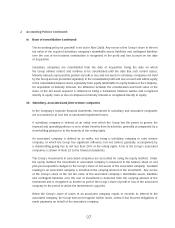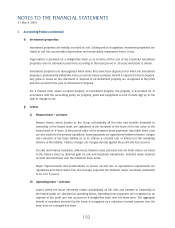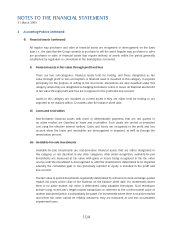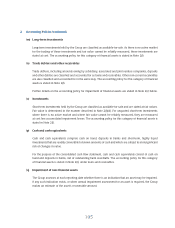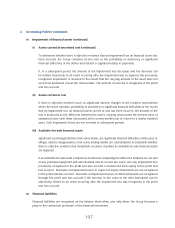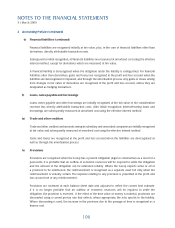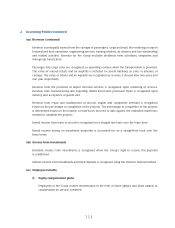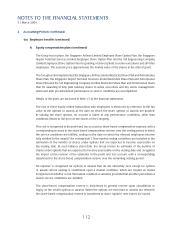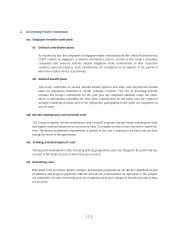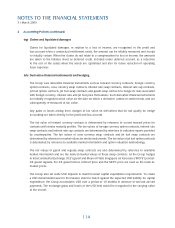Singapore Airlines 2009 Annual Report Download - page 108
Download and view the complete annual report
Please find page 108 of the 2009 Singapore Airlines annual report below. You can navigate through the pages in the report by either clicking on the pages listed below, or by using the keyword search tool below to find specific information within the annual report.106
NOTES TO THE FINANCIAL STATEMENTS
31 March 2009
2 Accounting Policies (continued)
(q) Impairment of non-fi nancial assets (continued)
An asset’s recoverable amount is the higher of an asset’s or cash-generating unit’s fair value less costs
to sell and its value-in-use and is determined for an individual asset, unless the asset does not generate
cash infl ows that are largely independent of those from other assets or groups of assets. In assessing
value-in-use, the estimated future cash fl ows expected to be generated by the asset are discounted to
their present value. Where the carrying amount of an asset exceeds its recoverable amount, the asset is
written down to its recoverable amount.
Impairment losses are recognised in the profi t and loss account except for assets that are previously
revalued where the revaluation was taken to equity. In this case the impairment is also recognised in
equity up to the amount of any previous revaluation.
For non-fi nancial assets excluding goodwill and those with indefi nite lives, an assessment is made at
each reporting date as to whether there is any indication that previously recognised impairment losses
may no longer exist or may have decreased. A previously recognised impairment loss is reversed only
if there has been a change in the estimates used to determine the asset’s recoverable amount since the
last impairment loss was recognised. If that is the case, the carrying amount of the asset is increased
to its recoverable amount. That increase cannot exceed the carrying amount that would have been
determined, net of depreciation, had no impairment loss been recognised previously. Such reversal is
recognised in the profi t and loss account unless the asset is measured at revalued amount, in which
case the reversal is treated as a revaluation increase.
(r) Impairment of fi nancial assets
The Group also assesses at each balance sheet date whether a fi nancial asset or a group of fi nancial
assets is impaired.
(i) Assets carried at amortised cost
If there is objective evidence that an impairment loss on fi nancial assets carried at amortised
cost has been incurred, the amount of the loss is measured as the difference between the asset’s
carrying amount and the present value of estimated future cash fl ows (excluding future credit
losses that have not been incurred) discounted at the fi nancial asset’s original effective interest
rate. The carrying amount of the asset is reduced either directly or through the use of an allowance
account. The impairment loss is recognised in the profi t and loss account.
When the asset becomes uncollectible, the carrying amount of the impaired fi nancial asset is
reduced directly or if an amount was charged to the allowance account, the amounts charged to
the allowance account are written off against the carrying value of the fi nancial asset.



